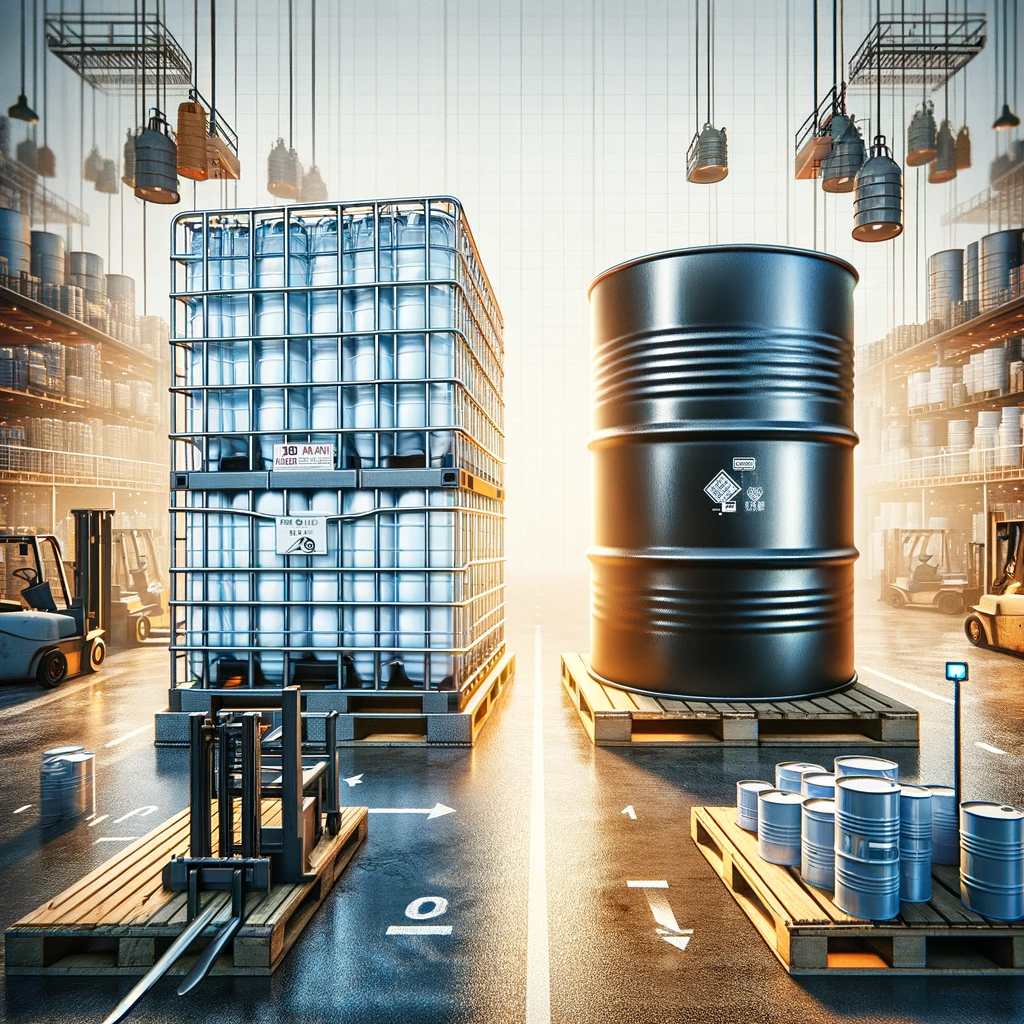If you're in an industry that necessitates the transport and storage of materials—liquids, semi-solids, or solids—you've probably encountered Intermediate Bulk Containers (IBCs) and 55 Gallon Barrels. These equipment are ubiquitous across manufacturing industries for logistics and storage. Traditionally, IBCs were disposable packaging, but their reusable nature has led to their popularity for transport and storage. This blog aims to delve into the specifics of IBC totes and barrels, comparing their utility and discussing the appropriate disposal methods for used units.
Understanding IBC Totes:
An Intermediate Bulk Container, or IBC tote, is a reusable container designed to streamline a multitude of uses. IBCs boast a stable structure, ensuring safety during storage and transport. These containers present a practical alternative to drums and tank trucks, simplifying the handling of liquids and granulated materials.
Specifically, Poly IBCs are single-piece, rotationally molded HDPE units that are durable and reliable. These containers are UN/DOT certified and can accommodate liquids with a specific gravity of 1.9, making them perfect for storing and transporting chemicals. Additionally, new Poly IBCs satisfy USDA and FDA food-grade requirements. Standard Poly IBCs come in 275 and 330-gallon capacities and feature sturdy bases for easy maneuvering with forklifts and pallet jacks. Plus, their design allows efficient stacking, saving time, storage space, and freight expenses.
IBC Totes' Origin and Material:
The invention of these versatile containers is often claimed by various manufacturers. However, Herberts paint manufacturer's logistics department is attributed to developing a pallet-adapted cubic container as early as the 1960s. In 1992, a patent application was filed by a Dow Corning employee for "intermediate bulk containers."
The construction of IBC totes includes a pallet, HDPE plastic bottle, and a metal cage. The plastic bottle tank is made from high-density polyethylene (HDPE). Surrounding the plastic bottle is a steel frame. The pallet underneath could be made of steel, wood, plastic, or a combination of these materials. Most IBCs are fitted with a discharge tap for easy drainage.
Industrial Uses of IBC Containers:
IBC containers serve various industries:
- Oil and Gas: Solvents, cleaning agents, adhesives, acids, alkalis.
- Pharmaceuticals and Cosmetics: Drugs, tablets, solvents.
- Food Industry: Liquid, granulated or powdered items like fruit concentrates, dairy products, syrups.
- Alcohol Production: Spirits and wine storage.
- Agriculture: Insecticides, pesticides, sand, and cereals.
- Automotive: Flammable paints, varnishes, and gasoline.
Moreover, these containers are a common choice for the food and beverage industry to store and transport liquids. Companies dealing with sensitive products often require new containers and utilize cost-effective Poly composite IBCs.
IBC Container Sizes and Types:
IBC totes typically come in 275 or 330-gallon sizes, but can range from 55 to 500+ gallons. The standard poly composite tote tank has a 40" x 48" base and can hold up to six 55-gallon barrels!
Types of IBC containers include Composite IBCs (plastic container, grid cage, pallet), Plastic IBCs (plastic container without a frame), Stainless steel IBCs, Flexible IBCs, and Foldable Plastic IBCs.
55 Gallon Drums:
These are often crafted with metal or plastic, accommodating 55 gallons of material. They are commonly used for shipping and storing liquids, semisolids, and pastes. Approved for transporting hazardous materials, these containers come in capacities from 3.6 to 220 liters.
IBC Totes vs. Barrels:
IBC totes have several advantages over barrels. Their capacity is greater, and they optimize storage space. Additionally, they simplify the process of transport and storage, with integrated pallets facilitating transport by forklifts and pallet trucks.
Reconditioned IBCs and Recycling:
Reconditioned IBCs are those that have been cleaned and inspected for reuse. The disposal and recycling of IBCs start with shredding, followed by washing and drying of the shredded plastic flakes. These are then recycled into degranulate, which can be utilized in production processes. This recycling process is not only cost-effective but also promotes a circular economy.
Dealing with IBC Totes Containing Hazardous Materials:
When transporting hazardous materials, IBCs are a permitted solution. The appropriate disposal and recycling of these containers require special attention due to the aggressive properties of the materials. Fortunately, many IBC tote recyclers are equipped to handle such materials. Laws restrict the use of composite IBCs with hazardous goods to a maximum of five years.

